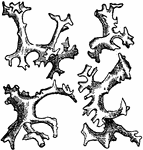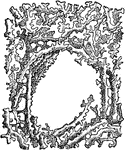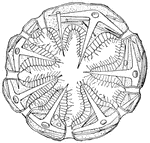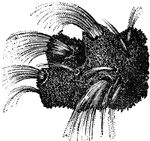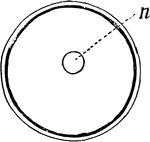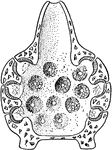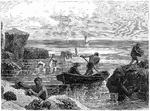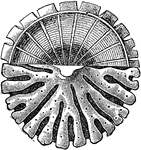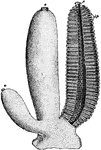Clipart tagged: ‘sponge’

Connective Tissue
"Connective tissue of sponge." — Encyclopedia BSponge Diver Counting Cardsritannica, 1893

Holtenia Carpenteri
A modern sponge with silicious skeletal structure, and basal glass fibers for fixation (Holtenia…
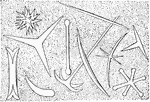
Sponge Spicules
Spicules may be made of silica or calcium carbonate, and vary in shape from simple rods to three-dimensional…

Sponge
In this simple sponge, water enters minute holes in the sides and passes out of the opening at the top…
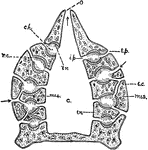
Sponge
"Diagram of simple type of sponge. c, cloaca; ch, chambers, lined with flagellate entoderm; e.p., external…

Sponge
The young sponge, a many celled animal, that begins its life as a single-cell, the egg. A section of…
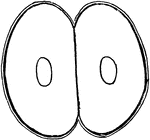
Sponge Develoment
The sponge, a many celled animal, begins its life as a single-cell, the egg. First division in into…
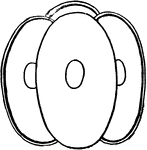
Sponge Develoment
The sponge, a many celled animal, begins its life as a single-cell, the egg. Second division into the…
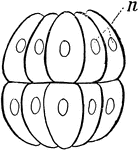
Sponge Develoment
The sponge, a many celled animal, begins its life as a single-cell, the egg. Fourth division into a…
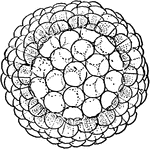
Sponge Develoment
The sponge, a many celled animal, begins its life as a single-cell, the egg. The continued division…

Sponge Develoment
The sponge, a many celled animal, that begins its life as a single-cell, the egg. The continued division…

Sponge Develoment
The sponge, a many celled animal, begins its life as a single-cell, the egg. After division of cells…

A Cretaceous Sponge
A Cretaceous sponge with silicious skeleton retaining its form. (Ventriculites simplex).

Living sponge, magnified
"A glace at a piece of common sponge will show that its surface is everywhere perforated with an infinite…
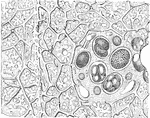
Lower Section of Sponge
An illustration of the lower portion of a sponge. O, OS, and M are illustrations of sponge eggs magnified…

Skeleton of Sponge
In zoology a skeleton is any fairly rigid structure of an animal, irrespective of whether it has joints…
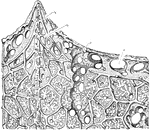
Upper Section of Sponge
An illustration of the upper portion of a sponge: p, Pore; s, Subdermal cavity; c1, chief fiver of the…

Sycon Gelatinosum
"Transverse section through the wall of a cylinder (parallel with the course of the canals), showing…
